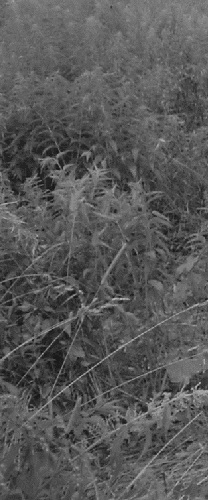About the subject. Taxonomy and faunistics.
Each textbook on zoology of ecology contains an information about the cladocerans (mainly Daphnia), and a non-cladoceran specialist could be surprised by our statements on the inadequate study of their biology, internal and even external structure. But the knowledge's on the cladocerans are quite fragmentary. After the period of classical publications (Leydig, 1860; Claus (1876, 1877; Sars, 1874, 1885, 1888, 1901, 1916; Lilljeborg, 1901), during a long period of time (during most part of the 20th century), the studies of morphology of different genera and families were conducting exclusively for the purposes of their taxonomy, and some generalizations for orders were making only in some introductory chapters for text-books (Smirnov, 1971). Cladocerans are now model objects of many investigations in different directions of recent fundamental science. But for many taxa we do not have adequate keys, what compromises all conclusions of such "style" and "technological" works.
Recently any studies on taxonomy, faunistics, zoogeography of the Cladocera of continental water bodies are not numerous. Only about 40% of known taxa are adequately described and redescribed. Some families (Macrothricidae, Moinidae, Bosminidae) and many genera from other families (Diaphanosoma, Latonopsis, Pseudosida, Acroperus, Ceriodaphnia, Scapholeberis, Daphnia и др.) remin to be poorly investigated. Insufficient study of the cladocerans of the world fauna could be confirmed by recent findings of new families: Pseudopenilidae Korovchinsky et Sergeeva, and Gondwanothrichidae Van Damme, Shiel et Dumont.
Although many investigators deal with the Cladocera, only a dozen of them makes some taxonomic works: K. Van Damme (University of Birmingham, UK), M. Alonso (University of Barcelona, Spain), L. Elmoor-Loureiro (Universidade Católica de Brasília, Brazil), and some others.
A significan contribution to the taxonomy of cladocerans was made by Professor Nikolai Nikolsaevich Smirnov and his alumni. From 7 volumes on the Cladocera of the prestigious series “Guides to the Identification of the Microinvertebrates of the Continental Waters of the World” (Coordinating editor: H.J. Dumont; Kenobi Productions, Ghent & Backhuys Publishers, Leiden), five books belong to this group (Korovchinsky, 1992; Smirnov, 1992, 1996; Orlova-Bienkowskaja, 2001; Kotov & Stifter, 2006). Recently, our collective is working on two new volumes: Aloninae (N.N. Smirnov, A.A. Kotov, A.Y. Sinev) and Eurycercidae (A.A. Kotov & E.. Bekker). A.A. Kotov is an editor of the Cladocera section in the FADA (Freshwater Animal Diversity Assessment, http://fada.biodiversity.be/) portal, and of the volumes from the series "Freshwater Invertebrates of the World" on different biogeographical zones. Therefore, a contribution from our collective to the cladoceran taxonomy is quite strong.
It is widely accepted that "faunistic reports belong to less effective taxonomic puvlications" (Mayr, 1971). But recently we have a situation, when this idea is wrong as be applied to cladoceran faunas of many regions of the World. Due to a rapid progress in morphological taxonomy, application of molecular methods, accumulation on the data on records of different taxa from different countries (even from those look like "well studied, like Russia), all previous data on many regions need in an accurate revision. The cladoceran faunistics is a called direction of hydrobiology.
One of the problematic zones for the cladoceran taxonomy is Eastern Palaearctic, most part of which belong to Russian Federation. Although the cladocerans of this region are under an intensive study, the formal species determinations by many authors are frequently based on Manujlova's (1964) book or more recent keybooks for the European fauna (see the list in Korovchinsky et al., 2012). Such approach leads to impossibility to reveal specific taxa, i.e. unknown for fauna of Russia and absent in such keybooks.
An example of recent detailed faunistic study of the Cladocera of Eastern Siberia and Far East of Russia is a series of the publications of our collective on Zeya (affluent of the Amur River) basin (Kotov et al., 2011 a, b). Together with new records of some species and even genera new for the fauna of Russia, we revealed an endemic species complex distributed in moderate latitudes of the Far East. Subsequently its presence was reported also for South Korea (Kotov et al., 2012). The Amur basin is probably the most northern region of its distribution, but the southern border of its distibution is unclear, although it is know that such taxa are absent in the tropical portion of Eurasia (Korovchinsky 2013).
If the biogeography of land animals are in a strong progress, that of freshwater organisms is less studied. Patterns of the distribution of freshwater animals are quite different from those in such organisms as angyosperm plants, mammals, birds or butterflies, based on which the recent biogeography was established. Particularly, such differences could be explained by a older age of the freshwater animals as compared with aforementioned land organisms. For examples the cladocerans is a group of at least of mid-Palaeozoic origin (Kotov, 2013).
Phylogeography is also better advanced in the land animals as compared with those from continental water bodies. A re-evaluation of the ides on the patterns of freshwater animals is an important task for the management of the latter. And the cladocerans could be modes for studies of the zoogeographic patterns in freshwaters.



